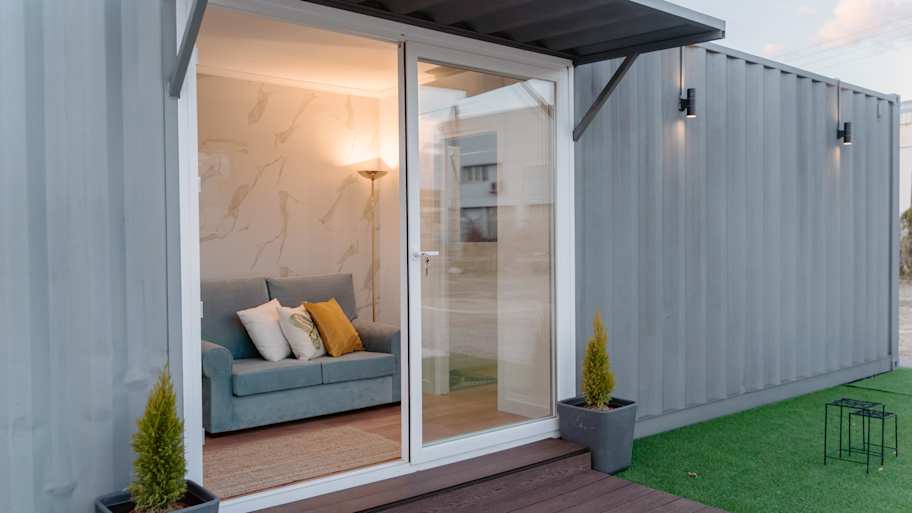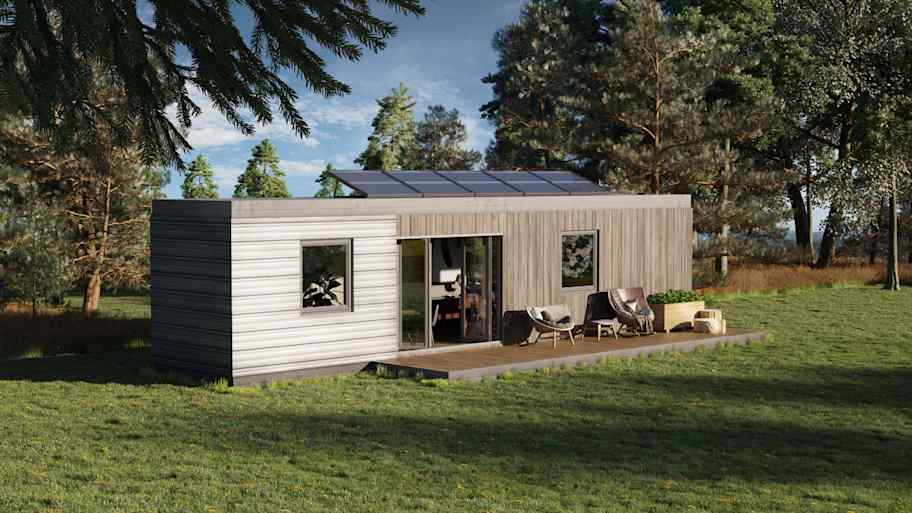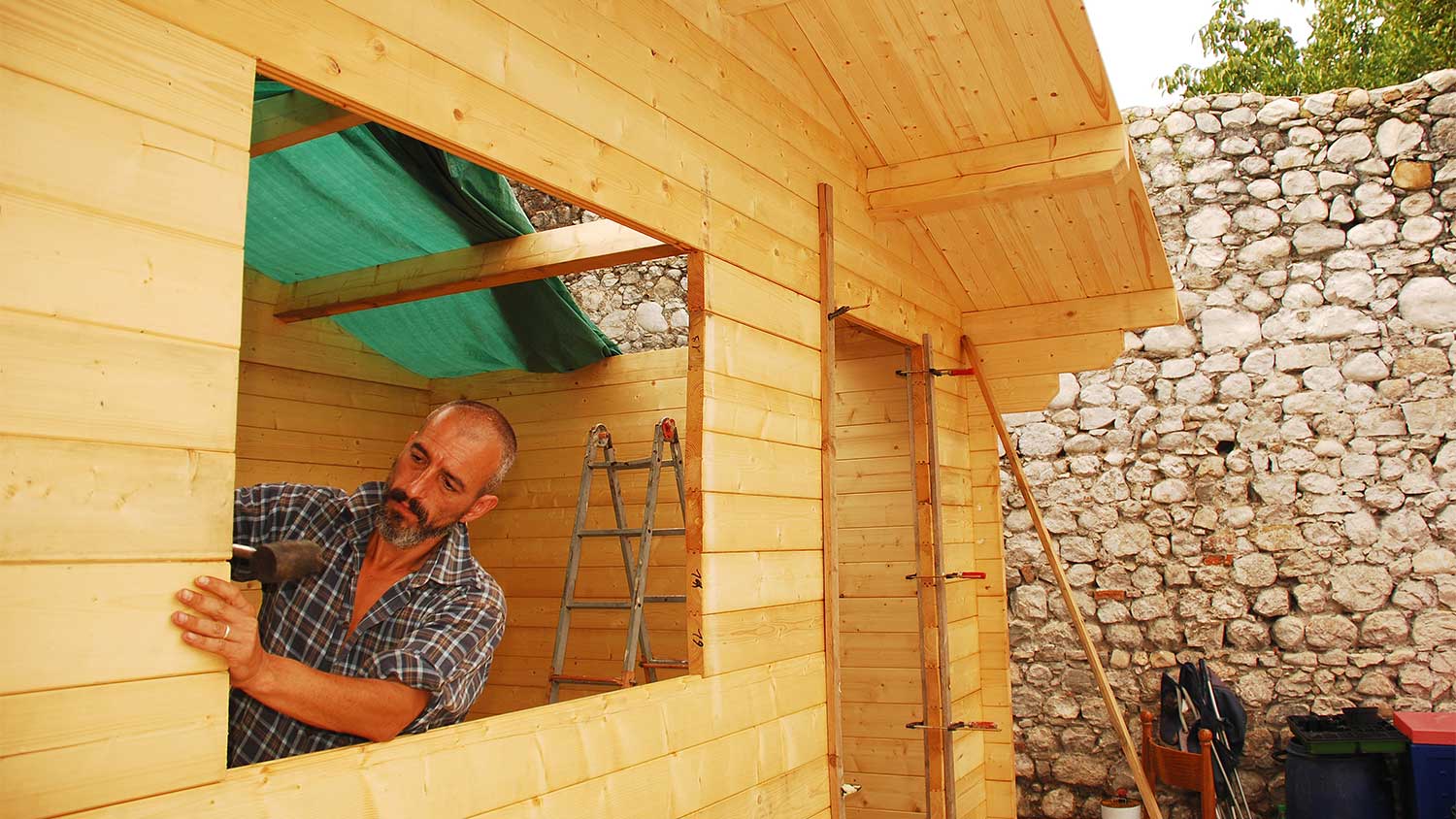
The cost to build a stone house is pricey. Learn why you need specialized workers to build the house to a level that’s good enough for you and the city.
Ship your dream home right to your door with this modular home trend


Container homes are a type of modular home made from cargo shipping containers.
The pros of these sustainable homes include low costs and quick construction.
The cons include permitting and building code issues, potential health hazards from industrial chemicals, and construction challenges.
You’ll need to hire a custom homebuilder to install this niche product.
Shipping containers aren’t just for cargo—they’re for adventurous homeowners, too. This innovative type of house is a rising trend largely because of its sustainability and affordability amidst sky-high housing costs. Whether it could be your dream home depends on what you’re looking for. Let’s weigh the pros and cons of container homes.
A shipping container home is a house that’s built using one or more shipping containers. Yes, we’re talking about the same shipping containers you see stacked on cargo ships. These steel boxes are exceptionally strong and durable and can be refurbished, stacked, and customized to create an affordable modular home.
Container homes rose out of the trend of tiny homes. You’ll find them in areas like Arizona, Texas, and Nevada, where there are fewer building regulations and land is more affordable. They’re also popular as sustainability-focused community projects in major cities.
Consult with a custom homebuilder before deciding whether a container home will fit your needs and your preferences for a new home.
| Pros of Container Homes | Cons of Container Homes |
|---|---|
| Less costly than traditional homes | Permit and building code issues |
| Quick construction | Limited supply |
| High durability | Smaller than traditional homes |
| Home can be moved | Possible health hazards and high temperatures |
| Sustainable building material | Construction challenges |

Container homes are rising in popularity as a way to make home ownership more accessible and sustainable. Plus, the construction of these durable homes is faster than traditional home building—you just need a small plot of land. Here’s a look at the many pros.
At $150 to $350 per square foot, shipping container homes are more cost-effective than traditional homes. While you can build a luxury model for upward of $400,000, the average shipping container home costs $80,000, and small, basic models start at around $25,000.
Shipping container homes can be constructed in much less time than a traditional wood or concrete home. This is because the structure is premanufactured, and you’ll just need to make it livable with a few modifications, electricity, and plumbing.
Shipping containers are made from corten steel, which holds up to the harsh conditions of maritime travel—this includes the extreme weather, corrosive saltwater, and constant motion. When converted into a home, it’s remarkably durable.
Many shipping container homes are portable, as long as you can take the containers apart and disconnect them from the electrical, water, and septic systems. This allows homeowners to move to a different city with their house in tow.
Container homes can be an eco-friendly option if they’re made from refurbished shipping containers. Additionally, these containers are made from steel, which you can recycle at the end of your home’s lifespan.
A few quirks come with the benefits of container homes. Since shipping containers were never intended to be homes, the cons include construction-related problems like potential issues with permitting and building codes, trouble sourcing usable containers, health hazards from industrial chemicals, and supply-chain problems.
Not every city has specific laws in place for container home installation. This can hold up the zoning and permitting process, and in some cases, you could get denied altogether.
Additionally, because shipping containers weren’t originally intended to be modular homes, retrofitting them to include the elements necessary to meet local building codes may be challenging. Look up the regulations where you live and consult with a custom homebuilder to be sure.
It can be difficult to source shipping containers for a container home. Though it’s more sustainable to refurbish an old container, most people prefer to use new containers or one-trip containers (that were only used once) to build their homes. These have superior structural integrity but can be hard to find, especially during industry shortages.
Container homes have a smaller footprint than traditional stick-built homes because shipping containers have set dimensions. Of course, there are exceptions like the sprawling NYC town house stitched together from 21 containers, as featured in Curbed, but that isn’t the norm. To save on costs, most container homes use one to three containers.
Shipping containers are used in an industrial setting, so many of them are treated with chemicals that help boost durability. Some of these chemicals can release toxins, which is a potential concern if you’re refurbishing secondhand containers.
Additionally, steel can get very hot during the summer months. This, combined with chemical exposure, means you’ll need an effective ventilation system, air conditioner, and insulation. Call a contractor to discuss these concerns before building your custom home.
Since you’re working with preexisting materials, there can be some construction challenges. You’ll need to cut into the steel walls of the shipping container to fit windows, doors, plumbing, and electricity. Space is limited, and your container can rust if it’s not properly sealed and there are moisture issues.

Container homes are a creative alternative to traditional stick-built homes, but if you’re looking to build on your property and maintain that same ease of installation and affordability, there are some other options you can consider:
Modular homes: While a container home is a type of modular home, most modular homes are built from traditional construction materials. They look the same as a conventional home but cost less.
Mobile homes: Mobile homes are a large trailer or a transportable prefabricated home that rests on a temporary foundation. These cost less than container homes up front, but you’ll most likely need to rent space in a mobile home lot.
Other prefab homes: Prefab homes include any type of home that’s constructed ahead of time, delivered to a plot of land, and assembled. This includes modular homes, mobile homes, and container homes, but can also include prefab home kits, tiny homes, and cabins. This solution saves on construction costs and could be right for you if it fits your needs.
If you’re primarily looking for a path to homeownership that is easier on your wallet or a sustainable home, a container home may check your boxes. Many homeowners choose them for Accessory Dwelling Units (ADUs) and guest homes on existing properties because of the quick construction time and low up-front costs.
That said, container homes are a commitment and not always the most straightforward build. These are custom homes that are prone to snafus with sourcing, zoning, permitting, and building codes. Other types of prefabricated homes, like modular homes and tiny home kits, have a more straightforward installation.
If you do take on this project, hire an experienced custom homebuilder near you who can manage the project from start to finish.
From average costs to expert advice, get all the answers you need to get your job done.

The cost to build a stone house is pricey. Learn why you need specialized workers to build the house to a level that’s good enough for you and the city.

Wondering how much it costs to build a house? Use this guide to cover all your bases, from permits and planning to construction and finishing touches.

Discover the cost to build a workshop. Learn about price ranges, key cost factors, and ways to save on your new workspace project.

Learn the essential foundation requirements for adding a second-story addition to your home, how much it costs, and other considerations.

It’s exciting to start planning your dream home, but first, you need to find the right professional to manage the work. Discover who to hire to build a house.

Whether you hire a pro or do it yourself, building a house has many challenges. Here are the biggest mistakes to avoid when building a new house.